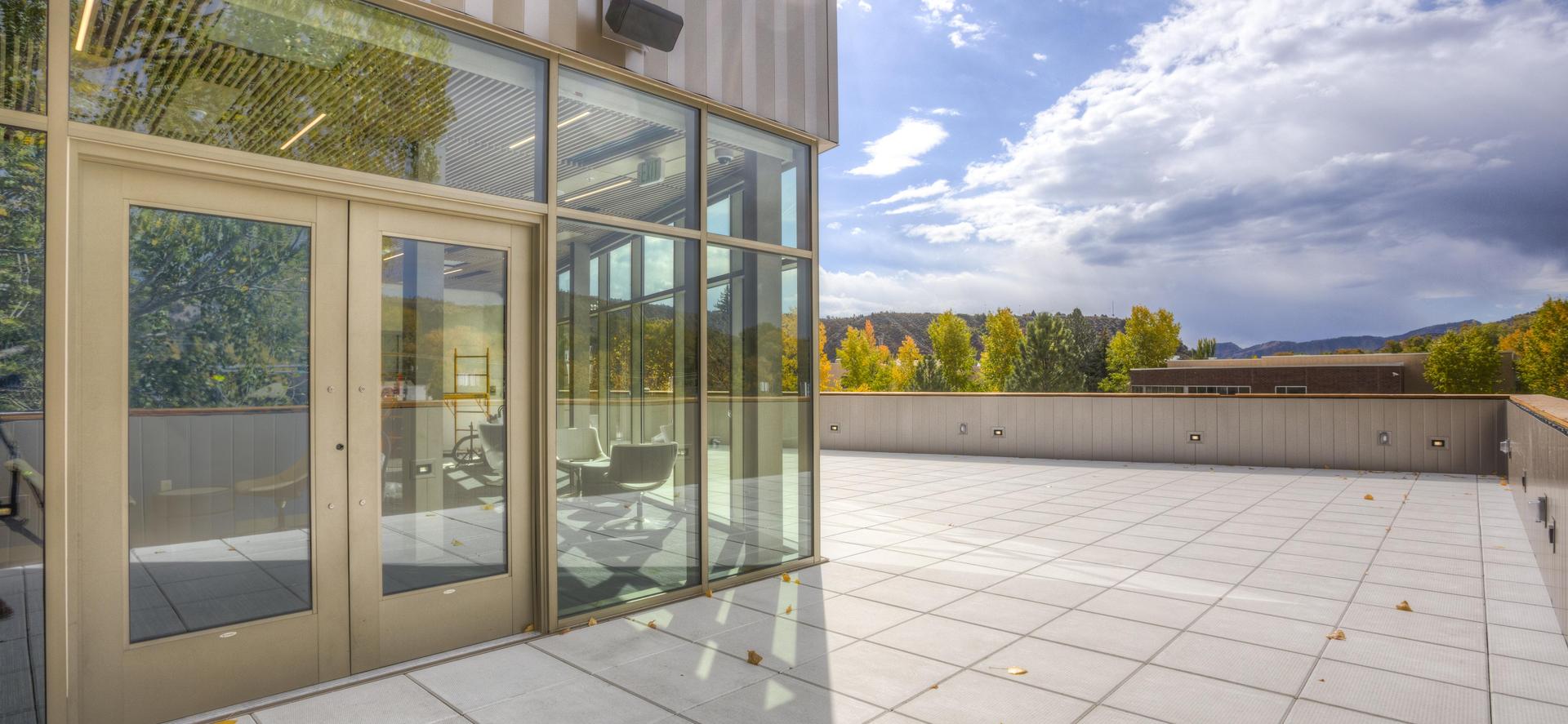Reduce Heat Island
Beating the heat improves air quality
As global temperatures rise, reducing heat islands becomes crucial for the building's resilience, decreased ozone formation and improvement of air quality.
A heat island effect involves dark surfaces absorbing heat and radiating it back to the atmosphere, raising temperatures. Heat islands raise temperatures and can impact school communities by increasing peak energy demand, air pollution levels, air conditioning costs, and heat-related illness.
A heat island effect involves dark surfaces absorbing heat and radiating it back to the atmosphere, raising temperatures. Heat islands raise temperatures and can impact school communities by increasing peak energy demand, air pollution levels, air conditioning costs, and heat-related illness.
Impact Career Innovation Center includes features that minimize impact on the microclimate, increase visitor comfort, and reduce building system demand.
- TPO roofing system: TPO is the short name for thermoplastic polyolefin. This innovative material is made up of polypropylene, a chemical compound known for its elasticity and durability and commonly used in the manufacturing of a slew of both industrial and household products. Polypropylene is also known for its slippery characteristic, which means it can work well to repel moisture from potential roof-wreckers like rain or snow. The other important component of TPO is ethylene-propylene rubber, a synthetic elastomer related to rubber. TPO material is typically manufactured in sheets that are available in various sizes, and is distinguished by its bright white color. Because of this substance’s ability to resist weather, ozone rays, heat and oxidation, it is an ideal ingredient for this type of application.
- Roof pavers on the outdoor terrace. The pavers have an Solar Reflective Index (SRI) greater than 80, which assists in reducing the heat island effect. SRI is a measure of the surface's ability to stay cool in the sun by reflecting solar radiation and emitting thermal radiation. So, a material with a higher SRI is better able to reject solar heat. The lower the SRI, the hotter a material is likely to become in direct sunlight.
Reducing the Heat Island is one of the standards of Collaborative for High Performance Schools. CHPS is a nonprofit organization that works to ensure all PK-12 students have access to environments that support learning and wellness. School facilities constructed or renovated using CHPS high performance building criteria are more energy- and water-efficient, and make a difference for students, teachers, and communities.

